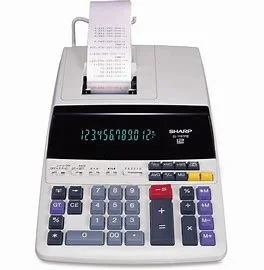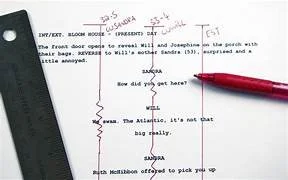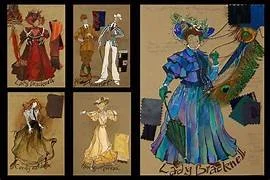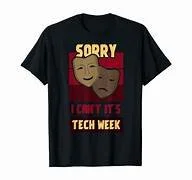How to Produce a Play: Theatre production from the page to the stage for beginners!
Get Your Play On
Have you ever wondered what it takes for theatre companies to bring new plays to life? Do you want to produce your own? Putting on a play sounds like a lot of hard work (it is), but a successful production is just a matter of imagination, organization, determination, and money. This short guide is a great way for fledgling producers to get an overview of a production from inception to opening night. Though, obviously, the bigger the production, the more complicated the process, most of the basic elements remain the same: find a script, audition actors, find a director or choreographer, rehearse it, advertise and promote it, etc. My own musical, HOW RUDE, is completely self-produced, and so I've picked up a few pointers along the way! Click here for a great beginning guide!
Get your play on stage! How much does it cost to produce a play?
Let's be honest: professional theatre is financially risky. Even a one-act play can be expensive. The budget for a splashy Broadway Musical like The Lion King can be 15 million dollars, while an Off-Broadway show goes well into six figures. Even a non-professional production at a local theatre carries considerable costs, and it is rare for any play to make a profit. From paying the cast and crew, to making props and costumes, any play costs beaucoup bucks -- so how much do you need, and where will you find the available funds? Before you produce your play, you will have to figure out the cost/benefit options. Finding a co-producer is always worth the effort. Click Here for more information!
Produce A Play: Put on a show in four simple acts!
ACT ONE: Find a great playwright, find a script, find a theatre, set the dates, budget!
Any good play or musical is based on a text that excites a group of creative actors, directors, and designers. The process of determining a great play can be long or short. After having tossed around ideas, read scripts, or even considered a few classic texts that are free from expensive royalties and have a smaller cast size, you have chosen a script by a great playwright. If you don’t already have a space and some dates set, you will need to find them and schedule them at this point. After you decide which play, you will need to acquire the rights, either by paying an individual writer, or by applying to a publishing company to see if the rights are available. You will then need to hire your creative team (director, lighting designers, set designers, etc.) and the production team which includes the production stage manager (PSM), technical director (TD), and their assistants, who will set clear goals and then delegate. Once the play, venue, dates, and rights are secured, the production needs have been determined, and the production team has been hired, you are ready to move into pre-production.
ACT TWO: Production calendar, audition and design (set design, costume, sound, prop design)
Pre-production can be thought of as the calm before the storm; however, the director and producer are hard at work. The production team is creating a list of clear realizable goals and dates. The set design, costume, light & sound designs are created, discussed, refined and finalized. A production calendar is created by the production manager. The director, choreographer and music director are also meeting during this period to make artistic decisions about blocking. At the same time, auditions are held, callbacks happen, and actors and crew members are assembled and hired. Meanwhile, front of house has begun a publicity campaign to sell tickets.
ACT THREE: Rehearsal and building
A regular rehearsal process is about three weeks from your first table read to opening night (obviously longer productions might require a longer rehearsal period). Your first rehearsal usually is a time of incredible excitement. During this time, actors and directors are working together: the play is blocked, lines are memorized, scenes are brought to life, motivations are discussed, and actors get feedback. The director may also cut or modify lines. The PSM is writing down stage directions. As you work, the play is repeated, refined, reshaped, and polished.
Meanwhile, costumes are being made and fit (costumes can take weeks to build), props found and made, the set is under construction, lights are being hung and focused, the sound package is being put into position, and all the other technical elements are being positioned.
At front of house, the publicity and advertising departments are in full swing with ticket sales, publicity, etc. Everyone is doing what they can to draw an audience. Programs are being made and edited. The lobby is being decorated with posters of the show and pictures of the actors. The box office is open during regular business hours, and online sales are being managed by the box office manager.
As you move throughout the production process, interdepartmental communications are happening under the watchful eye of the PSM. These ensure that the changes made by each department become shared knowledge. A weekly technical meeting is usually held to get out in front of a multitude of possible roadblocks.
Designers are brought into regular rehearsals after the basic show is in place. These run-throughs are especially important to the lighting and sound departments who need to be familiar the onstage show before production moves into the next part of this phase, tech and dress.
Once your play has been brought to life in the safe confines of the rehearsal hall, the task at hand become tech when the stage crew takes over. During tech, all of the elements of production (sound, set, props, etc.) are brought together, refined, polished and finalized.
ACT FOUR: Give it to the stage manager, lighting crew & staff within.
Technical rehearsal (TECH) starts on paper. The first stage is dry tech. Cues are set by the designers of all major departments sometimes with the help of the PSM or director. The costume parade also happens with actors showing their complete look to the director and designer for comments and changes. After all of this work is finished, the real tech begins and all of the major departments refine, change and polish their work. Special effects might even require special rehearsals. Tech is intense, time-consuming, and perhaps even a little boring, but also absolutely key in bringing a production to life.
After tech comes the dress rehearsal (some shows might require more than one dress rehearsal). This final run-through of the show is done in real time on the night before the first preview or opening. More about TECH
We are putting on a play! The last act of a successful production!
ACT FIVE: Publicity and Opening night, run, close, party.
OPENING: Now comes the thrilling part. You have gone through the lengthy process of tech and have survived the long nights and stress that come with it. You are now ready to open. Your first night is usually attended by friends, family, fans, season ticket holders, fellow artists, and, of course, the local critics. If all goes well, you will build a positive word of mouth. Paid advertisements will encourage people to buy tickets. Not every play is a hit production, but if this is your first play, I'm sure you will find the process exciting and rewarding.








